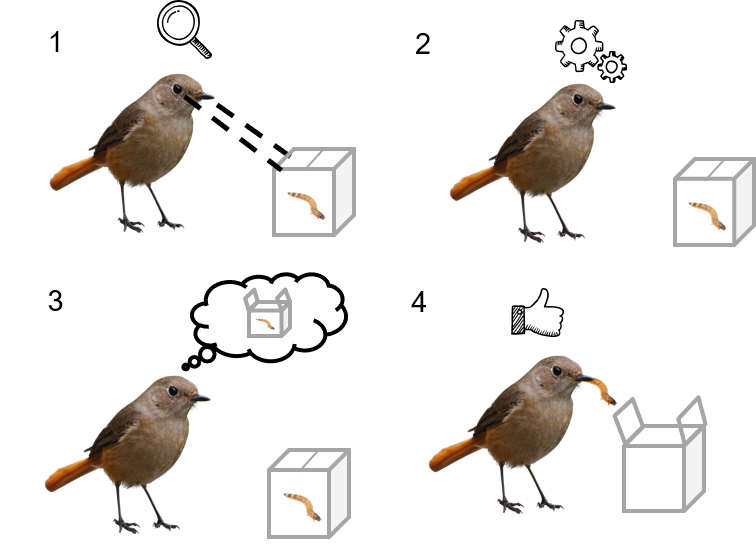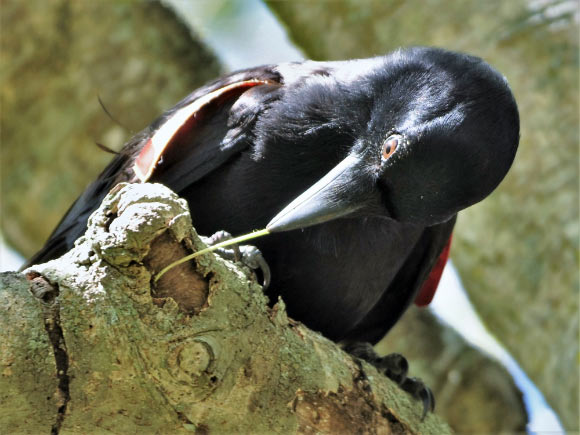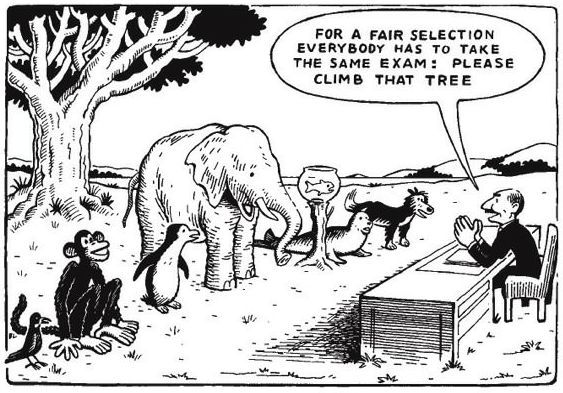Animal cognition can be defined as the mechanisms in which animals acquire, process, store and act on information of their environment (Shettleworth, 1998).

As a research area, animal cognition is relatively new and full of unanswered questions. Testing for cognitive ability in animals can be challenging. Many experiments are human-centric and based on what humans are good at, e.g. tool use, language, numerical counting… It is also complex to measure something we don’t fully understand. For instance, how can we test the cognitive ability of a mosquito when we can barely grasp how they perceive the world? But it is still in our nature to try to differentiate “us” (humans) from “them” (other animals).
The more we learn about what animals can do, the less humans seem unique. For example, tool use, which was thought to be an ability exclusive to humans, is also present in monkeys, birds, elephants, dolphins and even invertebrates such as octopuses and ants. Some animals are also able to manufacture their own tools by shaping leaves and sticks.

Further, there are some types of cognitive abilities that humans are very poor at and some animals excel. Spatial memory is one of them. Some species of birds and rodents , store food for times when resources are scarce and remember the exact location of their caches after weeks or months. Black-capped chickadees depend on stored food to survive during harsh winters and it is estimated that they can store up to 100 000 individual food items per year. Personally, I can’t relate to that. Every morning I forget where I put my keys and cell phone.
One of the biggest challenges in animal cognition research is to design tests that are relevant to the animal being studied, while still being comparable to other species. An animal that relies on smell to recognize peers, would be unlikely to pass a mirror self-recognition test. Not because it is not self-aware, but because the mirror does not provide the information needed for a species that relies on olfactory (smell) cues instead of visual cues.

Another example are bees, which are faster than most animals when it comes to associating a colour with a food reward. However, that does not mean bees are “smarter”, it reflects their well-developed (and necessary) ability to find colourful flowers to get food in their natural environment.
Therefore, whenever you get the urge to compare a chimpanzee with a 3-year-old child or to say that a dog is smarter than a fish, try to remember that there are different types of “intelligence” and they are all relative.

Juliane Gaviraghi Mussoi is a Ph.D. student from the University of Auckland. Her research focuses on vocalization, ornamentation and cognition of New Zealand fantails and Australian magpies. She is supervised by Dr. Kristal Cain and Dr. Margaret Stanley.
- Twitter @jgmussoi
- Site https://jgmussoi.wixsite.com/mysite
- Email jgav196@aucklanduni.ac.nz